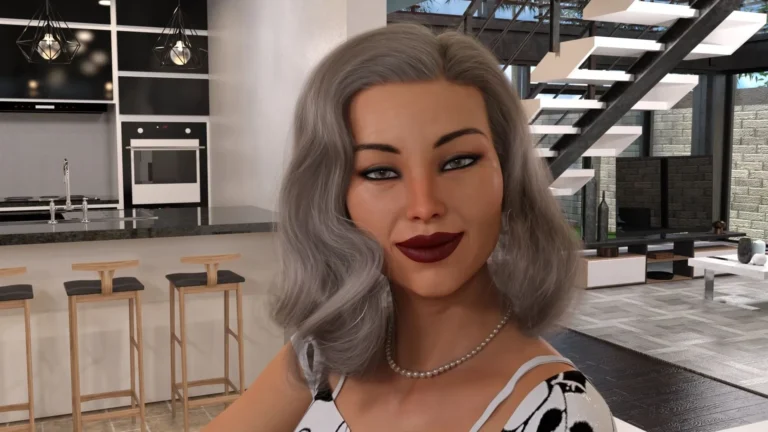
Grandma’s House
Play Grandma’s House
Grandma’s House review
Exploring the narrative, gameplay, and community behind this unique visual novel
Grandma’s House has carved out a niche in the visual novel genre, blending engaging storytelling with character-driven interactions. Unlike many titles that rush relationships, this game stands out by letting connections develop naturally, reflecting real-life pacing and emotional depth. Players step into a vibrant household, navigating friendships, trust, and personal growth. Whether you’re curious about the narrative, the cast, or what makes Grandma’s House unique, this guide offers a comprehensive look at the game’s world, mechanics, and why it resonates with its audience.
The World and Story of Grandma’s House
Stepping into Grandma’s House setting feels less like starting a game and more like arriving at a long-lost relative’s home for a warm, chaotic family reunion. 🏠 You play as yourself, moving into your grandmother’s sprawling, slightly cluttered house, which quickly becomes a vibrant hub for a rotating cast of fascinating individuals. This isn’t a fantastical realm or a post-apocalyptic landscape; the magic is in the mundane, the quiet moments shared over a cup of coffee in the kitchen or the laughter that echoes from the living room. The Grandma’s House story begins with this simple premise, but it’s the depth of human connection you find there that makes it unforgettable. From the moment you walk through the door, you’re not just a player—you’re a new part of a living, breathing family, and every choice you make weaves you deeper into its fabric.
### Setting the Scene: Life Inside Grandma’s House
The heart and soul of this experience is the Grandma’s House setting itself. This isn’t a static backdrop; the house is a character in its own right, with its creaky floorboards, sun-drenched porches, and rooms filled with a lifetime of memories. 🪴 The environment is designed to feel authentically lived-in. You’ll find yourself wandering through cozy common areas where characters naturally congregate, each space encouraging different kinds of social interactions. The kitchen might be the center of gossip and snack-sharing, while the backyard garden offers a more private, serene spot for one-on-one conversations.
What makes the Grandma’s House gameplay so compelling within this space is its freedom. You are never forced down a specific path or storyline. Instead, you’re given the autonomy to explore the house, seek out whoever you wish to talk to, or simply find a quiet corner to reflect. This sandbox-style approach to the Grandma’s House narrative means that your daily routine is your own to create. Do you help a housemate with a chore? Do you listen to another’s troubles? Or do you just enjoy the peaceful atmosphere? The Grandma’s House developer has meticulously crafted this space to feel like a real home, where the setting directly influences the mood and pace of the entire Grandma’s House story. It’s a masterclass in using environment to foster connection. 🌟
### Meet the Characters: Personalities and Relationships
If the house is the stage, then the incredible cast is the performance. The Grandma’s House characters are a diverse, deeply human group, each with their own intricate backstories, dreams, and insecurities. You won’t find archetypes here; you’ll find people. Getting to know them is the core of the experience, and building Grandma’s House relationships is a slow, rewarding process that feels genuinely authentic. I remember spending my first few in-game days just trying to figure out everyone’s names and quirks, and it was a joy to discover them organically.
Some individuals are open books, ready to share their life stories over a first meeting. Others are guarded, requiring consistent time, patience, and the right conversational choices to slowly lower their walls. This variation is key. One character might trust you quickly if you share a common interest, while another might need to see you be a supportive presence in the house over many weeks before they reveal their deeper struggles. This careful construction of the Grandma’s House characters is a testament to the Grandma’s House developer‘s commitment to creating a believable social ecosystem. Your Grandma’s House relationships with them aren’t just binary “like/dislike” meters; they are complex webs of trust, shared experiences, and emotional investment.
To help you get acquainted, here’s a look at some of the personalities you’ll encounter:
| Character | Personality Vibe | Relationship Dynamics |
|---|---|---|
| The Caretaker | Warm, nurturing, and the unofficial heart of the home. Always has a pot of tea ready. ☕ | Acts as a gentle guide. Building trust with them opens up deeper insights into other housemates and the history of the house itself. |
| The Creative Soul | Passionate, moody, and deeply expressive. Often found lost in their art or music. 🎨 | Connects through shared appreciation for creativity. They value meaningful conversations about dreams and fears over small talk. |
| The Reserved Intellectual | Quiet, observant, and brilliantly sharp. Prefers the company of a good book to a loud crowd. | Requires patience. They open up through intellectual discussions and demonstrated loyalty, not through forced socializing. |
| The Free Spirit | Energetic, spontaneous, and always planning the next adventure. Brings laughter and chaos in equal measure. | Relationship grows through shared activities and a willingness to embrace their spontaneity. They help you see the joy in the moment. |
Navigating this social landscape is the essence of the Grandma’s House gameplay. You learn that every interaction matters, and the effort you put into understanding these complex Grandma’s House characters directly shapes your unique Grandma’s House story.
### Narrative Structure: Pacing and Player Choice
The Grandma’s House narrative rejects the idea of a rushed plot in favor of a beautifully executed slow-burn approach. This isn’t a story about saving the world; it’s a story about understanding people. The pacing mirrors real life, where friendships and trust are built over shared meals, casual chats, and the quiet passage of time. Weeks can go by in the game where the most significant event is a heartfelt conversation on the porch swing. This deliberate pace is a bold choice that makes every breakthrough feel earned and profoundly meaningful. ⏳
Central to this is the power of player choice. The Grandma’s House story is not something that happens to you; it’s something you actively build with every decision. There are no right or wrong answers, only choices that lead to different shades of connection. The dialogue options you select, the people you choose to spend time with, and even the small favors you agree to or decline—they all ripple outwards, influencing how characters perceive you and what parts of themselves they are willing to share.
Pro Tip: Don’t try to be everyone’s best friend at once. Focus on building a few deep Grandma’s House relationships naturally. The story is richer when you allow connections to unfold at their own pace.
For instance, a character might be venting about a personal problem. You could:
* Choice A: Offer a sympathetic ear and share a similar experience of your own.
* Choice B: Give practical, logical advice to solve the issue.
* Choice C: Lighten the mood with a joke to distract them.
Your choice here doesn’t just affect that single conversation. A character who values emotional connection might trust you more if you pick A, while a more pragmatic individual might respect Choice B. Choice C could either successfully cheer them up or make them feel you’re not taking them seriously, depending on their personality. This nuanced system means the Grandma’s House gameplay is a constant, engaging exercise in empathy and observation. You’re not just reading a story; you’re co-authoring it through your actions, crafting a personal Grandma’s House narrative that is uniquely yours. The Grandma’s House developer has placed an incredible amount of faith in the player to find their own way, and that trust is what makes the journey so special. 💫
Example: A Day in the Life of Your Story
Let’s look at how a simple morning can branch out based on your choices and shape your Grandma’s House relationships:
- You wake up and head to the kitchen.
- Scenario 1: The Caretaker is making breakfast and looks stressed. You offer to help. You spend the next hour chopping vegetables and listening to them talk about their worries. Your relationship deepens through this shared labor, and they later confide in you about a concern they have for another housemate.
- Scenario 2: The Caretaker is making breakfast and looks stressed. You decide to grab a quick snack and head outside instead. You find the Free Spirit trying to start a bonfire for the evening. You join them, gathering wood and making plans for the night. Your relationship with them grows, but you miss the opportunity to connect with the Caretaker.
- Scenario 3: You see both the Caretaker and the Reserved Intellectual in the kitchen, having a quiet, intense discussion. You can choose to interrupt, to listen from a distance, or to leave them to it. Your decision here tells both characters something about your respect for their privacy and space.
This is the beautiful machinery of the Grandma’s House story at work. It’s a world that lives and breathes around you, waiting for you to reach out and find your place within it. By prioritizing authentic character development and player agency, the Grandma’s House developer hasn’t just created a game; they’ve built a home. 🏡
Grandma’s House stands out in the visual novel genre by prioritizing authentic character development and meaningful player choice. Its slow-burn narrative invites players to invest time in building trust and relationships, creating a richer, more immersive experience. While the pacing may not suit everyone, those who appreciate depth and realism find much to love. If you’re looking for a story-driven game where your decisions truly matter, Grandma’s House offers a unique journey worth exploring. Dive in, take your time, and see where the story takes you.






























